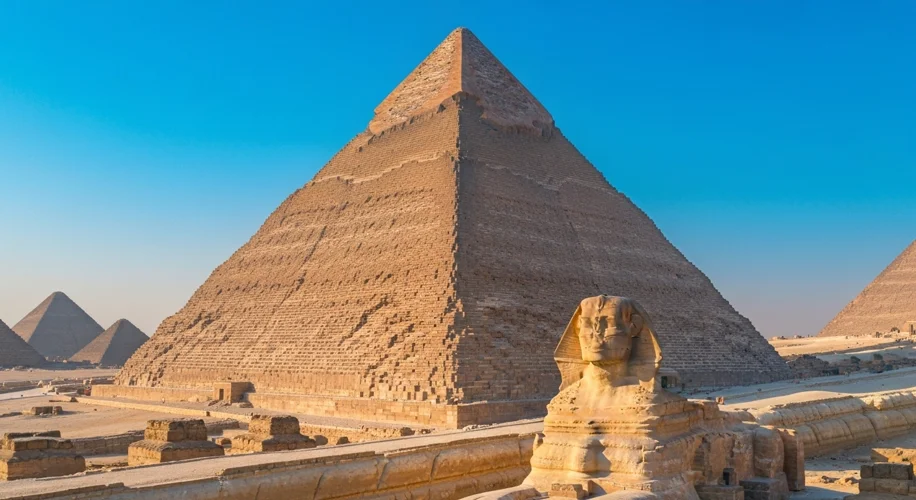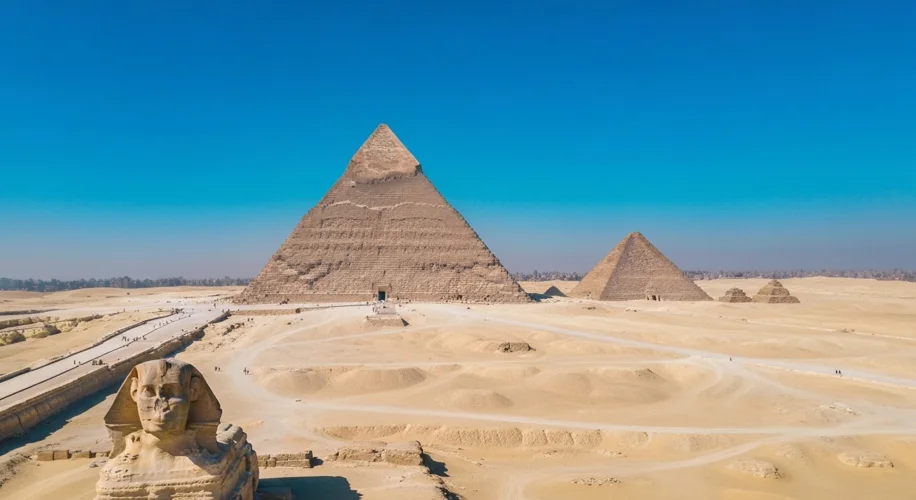Imagine a world bathed in the golden hues of the desert sun, where the Nile River, the lifeblood of a civilization, flowed with purpose. It was in this ancient land, under the watchful gaze of pharaohs and the divine presence of gods, that humanity achieved feats of engineering that continue to astound us millennia later: the Pyramids of Giza.
For centuries, these colossal structures have stood as silent sentinels to a bygone era, their very existence sparking endless debate and wonder. How, with the tools and knowledge available over 4,500 years ago, did the ancient Egyptians manage to quarry, transport, and meticulously place millions of stone blocks, some weighing many tons, to construct monuments of such staggering scale and precision? This is not merely a story of labor; it’s a testament to human ingenuity, organizational prowess, and a profound spiritual belief system.
Let us journey back to the Old Kingdom of Egypt, a period of unparalleled stability and prosperity, roughly from 2686 to 2181 BCE. This was the age of the pyramid builders, a time when the pharaoh was not just a ruler but a god on Earth, his tomb meant to be a stairway to the heavens. The most iconic of these are the Great Pyramids of Giza, built for Pharaohs Khufu, Khafre, and Menkaure.
The Great Pyramid of Giza, built for Pharaoh Khufu, is the largest and oldest of the three. It’s estimated to contain around 2.3 million stone blocks, each averaging about 2.5 tons, with some granite blocks in the King’s Chamber weighing as much as 80 tons.  Consider the sheer logistics: quarrying these stones, likely from nearby limestone quarries for the main structure and granite from Aswan, hundreds of miles to the south. Then came the transport. While theories abound, evidence suggests a combination of sledges pulled by teams of workers over lubricated surfaces, and possibly rafts on the Nile for longer distances.
Consider the sheer logistics: quarrying these stones, likely from nearby limestone quarries for the main structure and granite from Aswan, hundreds of miles to the south. Then came the transport. While theories abound, evidence suggests a combination of sledges pulled by teams of workers over lubricated surfaces, and possibly rafts on the Nile for longer distances.
The workforce itself is a subject of much fascination. Gone is the popular image of enslaved masses toiling under the lash. Archaeological discoveries, particularly a village built for the pyramid workers discovered near Giza, paint a different picture. These were not slaves, but skilled laborers, artisans, and conscripted farmers who worked on the pyramids during the annual Nile flood, a time when agricultural work was impossible. They were fed, housed, and even received medical care. This was a highly organized, national project, a reflection of the pharaoh’s immense power and the state’s ability to mobilize resources and manpower on an unprecedented scale.
The precision of the construction is mind-boggling. The base of the Great Pyramid is almost perfectly level, and its sides are aligned with remarkable accuracy to the cardinal directions. How did they achieve this without modern surveying equipment? Theories involve simple yet ingenious astronomical observations and rudimentary tools. They may have used a plumb bob and sighting tools, or perhaps created a level surface using water to guide their measurements.
The internal structure, with its intricate passages, chambers, and the famous Grand Gallery, further showcases their architectural and engineering brilliance. The precise fitting of the massive granite blocks in the King’s Chamber, for instance, leaves no room for mortar, yet the joints are incredibly tight.
The purpose of these pyramids was deeply rooted in Egyptian religious beliefs. They were not mere tombs, but eternal resting places designed to protect the pharaoh’s body and ensure his successful journey to the afterlife, where he would join the gods. The pyramid’s shape itself is thought to symbolize the primordial mound from which the Egyptians believed life emerged, or perhaps rays of the sun descending to Earth, facilitating the pharaoh’s ascent.
The legacy of the pyramids extends far beyond their impressive physical presence. They represent a pinnacle of ancient Egyptian achievement, a testament to their understanding of mathematics, engineering, astronomy, and large-scale project management. They continue to inspire awe and fuel our curiosity about the human capacity for creation. As we gaze upon these ancient wonders, we are reminded of the enduring power of human ambition, faith, and the quest to leave an indelible mark on time.

